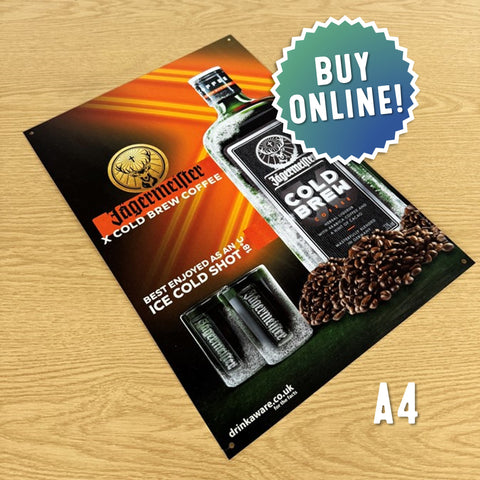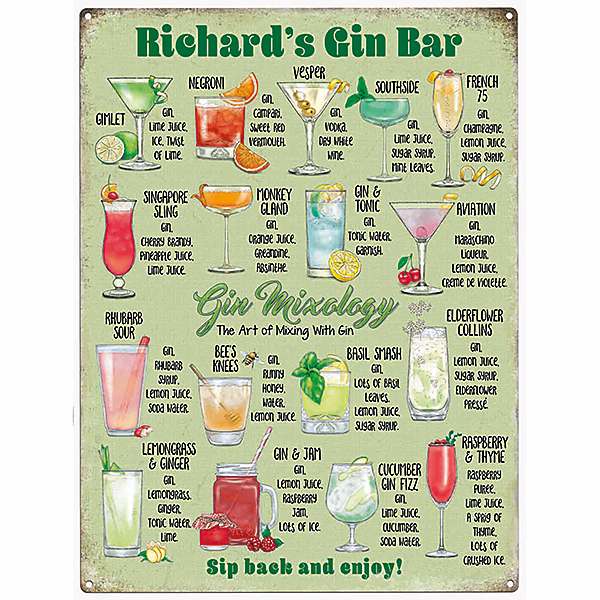Excellent Facts For Selecting Man Cave Signs
Wiki Article
What Are The Main Differences Between The Bar Sign And Their Different Applications?
There are a variety of uses of bar signposts. Here are several key purposes of bar signage and the ways they differ. Branding
Goal is to establish and consolidate the branding of the bar.
Usually, it is the bar's logo, its name, or its signature colors. Designed to be a prominent element that is a reflection of the bar's overall theme and style.
Examples: Neon signs with the logo of the bar, custom-made metal signs that feature the bar's name.
2. Information
Goal: Inform customers about the bar.
Features: Simple-to-read, clear text that communicates important information such as operating hours, Wi-Fi passwords, or house rules.
Examples: Signs on the entrance to indicate the hours of operation, signs pointing towards restrooms.
3. It's a decorative object.
The goal is to improve the appearance and atmosphere of the bar.
Bar decor is often more artistic, or themed. The bar may or may not have any written text.
Examples include beer advertisements from the past or signs that are humorous, funny, or themed.
4. Promotional Items
The goal of the campaign is To advertise certain products, specials or special events.
Highlights: Stunning graphics that showcase special offers or upcoming events. It can also include elements that are temporary or changeable ones.
Examples: Chalkboards displaying daily specials and banners that promote happy hour, or posters announcing the upcoming events.
5. Directional
Use: To direct patrons to the right bar.
Features: Clear arrows for customers to follow, e.g. finding restrooms, exits and other areas of the bar.
Examples: Directional arrows pointing to different seating areas, signage pointing towards restrooms and exits.
6. Regulatory/Compliance
The purpose of this program is to comply with the law and to ensure the safety of our customers.
Highlights: Signs that are required to meet legal obligations. They include signs that indicate smoke-free zones, occupancy limits and emergency exits.
For example: "No Smoking", occupancy limits, emergency exit signage.
7. Interactive
The goal is to engage customers and create an engaging experience.
Features: The elements that encourage patron participation. Examples include write-on surface and digital interactions.
Signs that have QR codes that connect to digital menus, social media sites or other sources of information.
8. Thematic
The purpose of this theme is to establish a mood or an atmosphere. specific mood.
Highlights: Signs that are aligned with the theme of the bar, adding to the overall ambience.
Examples: Pirate signs in nautical bars and rustic wooden signs in a bar with a country theme.
9. Menu
Use to display the menu of bars.
Features: Clear list of food and beverages and beverages, often with prices. It can be static or can change.
Examples Screens that are digital and display the menus in rotation, or wall-mounted drink menus.
Each bar signage type is intended to perform specific functions and has been specifically designed for this purpose. By understanding the differences between the different types of signs, bar owners will be able decide and install signs in a way that improves patrons' experience and also meets their needs for operation. Have a look at the top bar signs recommendations for site recommendations including personalised sign for bar, personalised metal pub signs, hanging tavern sign, personalised cocktail sign, personalised outdoor pub signs, pub signs for garden bar, cocktail bar sign, garden pub signs, bespoke bar signs, pub bar signs and more.

How Do Bar Signs Differ In Terms Of Mounting And Installation?
Bar signs differ in terms of mounting and installation according to their type and size, weight, location, and intended purpose. This article will provide a comprehensive overview of the various mounting and installing techniques for bar signs. 1. The wall-mounted sign
Characteristics: Fixed directly to walls.
Methods:
Anchors and screws are typically used on signs that are heavier (metal or wood) to ensure stability.
Adhesive Strips: Ideal for signs that are lighter (foam board and acrylic) and temporary installations.
Brackets that are used to hold signs protruding from the walls for more visibility.
Uses: Indoor decor, menu boards, directional signs.
Advantages: Easily adjustable as well as secure and a prominent display.
Negatives: Walls can be damaged, it is difficult to move.
2. Hanging Signs
Characteristics Suspended overhangs or ceilings.
Methods:
Chains are durable, flexible and suitable for signage that is heavy.
Cables: Contemporary designs typically use cables for their sleeker appearance.
Rods: Provide a rigid support structure.
Uses: Ceiling decor, directional signs, overhead promotional signs.
Benefits: Very visible, it makes use of vertical space, and can be decorative.
Advantages
3. Freestanding Signs
Specifications: Does not connect to any structure. It is supported by a base or stand.
Methods:
A-Frames (foldable and portable) frequently employed as an advertisement for sidewalks.
Pedestal Stands: Stable base, ideal for indoor use.
Panel and post: Typical for larger permanent signs.
Uses: Outdoor advertising, indoor directional signs, promotional displays.
Benefits: It is easy to transport, portable and adaptable.
Disadvantages: Can be bulky needs flooring space.
4. Window Signs
The characteristics of this device are that it is attached directly to windows.
Methods:
Suction Cups: Easy to remove and install, suitable for lighter signs.
Adhesive Glass can be applied directly on the glass's surface. It is ideal for decals, graphics as well as other graphics.
Static Cling: Permanent, non-permanent and simple to apply or remove.
Uses: Promotional message, branding and operating hours.
Benefits: Increases space in windows. Visible from the outside.
Cons: Limited by the size of windows, they can be affected by sunlight.
5. Signs with Backlit Edge-Lit as well as LEDs
Features: Include lighting into the structure of the sign.
Methods:
Wall mounting with electrical connections: It requires a secure connection and electrical connections.
Suspended using Power Cables Hanging method with integrated lighting.
Examples include high-visibility branding for menu boards as well as decorative elements.
Advantages: Increased visibility, attractive lighting.
The disadvantages are that installation requires electrical power and is more complex.
6. Temporary and portable Signs
Features: Designed for simple installation and removal.
Methods:
Pop-Up stand is lightweight and compact.
Banner Stands: Roll-up or retractable designs.
Applications: Promotions and events Decoration for seasonal events.
Advantages: Easy to carry, quick setup.
Advantages : less durable and might not be as stable.
7. Magnetic Signs
Magnetic force used for attachment.
Methods:
Magnetic Strips: Applied on the reverse of the sign.
Magnetic Boards: Signs that stick to metal surfaces.
The uses include: menu boards, announcements that are not permanent or changeable.
Benefits There are no permanent fixtures required and the item is simple to replace.
Limitation to magnetic surfaces can cause it to be less secure.
8. Projection Signs
Features Highlights: Project images or words by using light.
Methods:
Mounted Projectors are securely mounted to walls and ceilings.
Portable Projectors can be set on stands or other surfaces.
Uses : Dynamic displays to promote events, promotions and other promotions.
Advantages: No requirement to buy an actual sign, since content can be changed easily.
Advantages
Considerations for Mounting and Installation
Size and Weight
Signs of Heavy Weight: You need more sturdy mounting techniques, such as screws and anchors.
Light Signs can be created with less complex methods, such as adhesive strips or suction cups.
Durability
Make sure you use permanent signs that are more durable.
Temporary Signs: Select methods that make it easy to remove and moving.
Location
Indoor: More flexibility in techniques and materials, less concern for weather resistance.
Outdoor: The material used to mount outdoor items should be resistant to weather and should be mounted with a solid structure.
Aesthetics
Concealed Mounting - Provides a clean appearance by hiding the hardware for mounting.
Signs can be enhanced by using attractive hardware.
Accessibility
Easy Access to Changes Signs that are updated frequently, like menu boards.
Security: Make sure signs can't be easily manipulated or taken.
Take note of these aspects when selecting the methods of mounting and installing to install your bar. You can be sure that these methods are compatible with both aesthetic and functional requirements. Read the recommended gin bar sign info for more examples including garden bar signs, personalised hanging bar sign, pub signs to buy, pub bar signs for sale, the pub sign, pub wall sign, signs for the bar, personalised garden bar signs, pub wall sign, bar sign outdoor and more.

What Are The Differences Between Bar Signs And Interactive Signs?
There are a variety of levels of interactivity that can be used on bar signs to improve the customer experience and engagement. Interactivity of bar signs is different. Static Signs
Traditional Design: Static signs transmit information without any interactive elements.
Common types include printed posters as well as wall murals that are painted and standard neon signs.
2. Digital Displays
Digital Signs permit multi-media content and live-time animations.
Interactivity: Touchscreens can offer interactive menus, games, or even promotional content.
Benefits: Attract attention, deliver dynamic information and boost the participation of patrons.
3. QR Codes
QR Codes are able to link directly to profiles on social media or menus.
Benefits: Quick access to information regarding promotions or loyalty programs.
4. LED Screens
LED screens can be used for dynamic messaging, for example scrolling text and video.
Interactivity: LED screens enable patrons to interact with the screen, such as by selecting menu items or playing a game.
Benefits: Attract attention, convey information clearly, and create engaging experiences.
5. Projection Mapping
Immersive experience: Projection maps transform surfaces into interactive displays and dynamic images, allowing for storytelling.
Visitors can participate by playing games that are interactive, or by experiencing virtual experiences.
Benefits include creating an environment that encourages social interaction and improves the experience of being part of the room.
6. Augmented Reality (AR).
AR: AR overlays interactive digital content over the physical environment.
Signage that is AR-enabled gives customers the possibility of engaging with virtual components. For example, they can view cocktails recipes, and play virtual games.
Benefits: Unique experiences engage customers and help you stand out from other bars.
7. Motion Sensors
Motion sensors are able to detect movement and trigger interactive responses to signs.
Interactivity - Signs are able to respond by changing their content or displaying animations, as well as displaying personalized messages in response to the patrons' actions.
Benefits: Create immersive environments and amaze your customers.
8. Social Media Integration
Online Interaction: Signs with hashtags or social media handles could encourage patrons online interaction.
User-Generated Materials: Encourage your patrons to post photos of their signs to social media to increase visibility and reach for your establishment.
Benefits : Promote participation in the community, increase brand awareness, generate user-generated material.
9. Interactive Lighting
Dynamic Effects Neon or LED signs that have interactive lighting are able to respond to sounds, touch, or motion.
Signs may be interactive, changing the color, brightness or patterns based upon the interactions of customers or other environmental signals.
Benefits: Create immersive environments which enhance ambiance, as well as captivate the attention of.
10. Gamification
Signs with Interactive Games and Challenges: These signs include interactive games and challenges that entertain the patrons and encourage their participation.
Offer discounts and freebies in order to encourage participants to take on challenges and win games.
The benefits include: extending time spent in the room, fostering social interaction, and enabling return visits.
Bar owners who incorporate interactive elements in their signage can create engaging experience that will capture customers' attention, enhance the visibility of their brand and differentiate them in a highly competitive market. Take a look at the recommended he has a good point for website examples including large bar signs, cocktail bar sign, personalised hanging bar sign, hanging pub signs personalised, design a pub sign, indoor bar signs, hanging pub signs, bar signs, indoor bar signs, bar signs for home and more.
